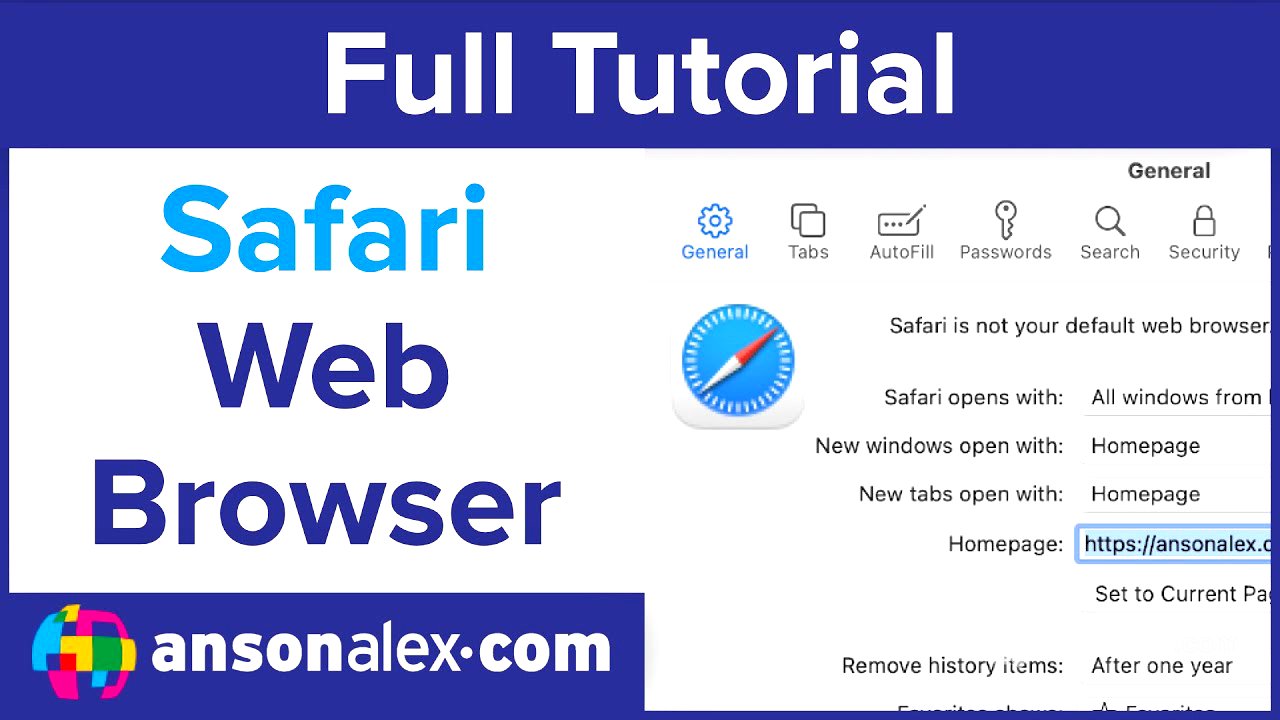TLDR;
This video provides a comprehensive guide to using Safari on macOS, covering essential features such as navigating the address bar, managing tabs and bookmarks, customizing the toolbar, and configuring preferences. It also touches on privacy settings, extensions, and other customization options to enhance the browsing experience.
- Navigating the address bar for website access and Google searches.
- Managing multiple tabs, reordering them, and viewing all tabs at once.
- Creating, organizing, and accessing bookmarks and using the reading list.
- Customizing the toolbar with various buttons and setting a homepage.
- Configuring Safari preferences, including startup options, passwords, search engine, and privacy settings.
Introduction to Safari [0:00]
The video introduces Safari for macOS, noting that most features also apply to iOS. It specifies the current Safari version as 14.0.2, accessible via the Safari menu. Safari is presented as a web browser, similar to Google Chrome, Microsoft Edge, and Mozilla Firefox.
Navigating the Address Bar [0:30]
The address bar at the top allows users to enter website addresses or directly search Google. The browser includes standard back and forward buttons. The video aims to provide a comprehensive overview, encouraging viewers to pause and rewind as needed while following along in their own Safari browser.
Managing Tabs [1:21]
New tabs can be opened by clicking the plus icon or using the command+T shortcut, while command+W closes the current tab. Users can navigate between tabs by clicking on them, keeping multiple websites open simultaneously. Tabs can be reordered by dragging and dropping. All open tabs can be viewed at once by clicking the double square icon in the top right corner.
Working with Bookmarks [2:38]
Bookmarks allow easy access to websites without entering their addresses. To bookmark a site, click the share icon and select "Add Bookmark." Bookmarks can be saved in the "Favorites" folder or custom folders. New folders can be created by right-clicking in the bookmark sidebar. Bookmarks can be accessed via the book icon or the bookmarks menu at the top. The command+D shortcut also bookmarks a page.
Customizing the Toolbar [5:29]
Right-clicking on the toolbar allows customization, such as adding a bookmarks button or a home button. Users can drag and drop buttons to their preferred locations. Adding a home button requires setting a homepage in Safari's preferences.
Additional Sharing Options and Browser History [6:31]
The share menu allows adding pages to the reading list, emailing pages, or sending them via messages or AirDrop. The reading list is similar to bookmarks but intended for temporary saves. The arrow in the address bar reloads the current page. The history menu shows browsing history and allows clearing it for a specified time frame.
View Menu Customizations [7:53]
The view menu offers customization options, including showing the favorites bar, which displays favorite bookmarks for quick access. This bar can be toggled on or off via the view menu.
Safari Preferences [8:37]
Safari preferences, accessed via the Safari menu, allow users to choose what Safari opens with, such as a new window or all windows from the last session. New windows and tabs can be set to open with the start page or a custom homepage, set in the preferences.
Passwords, Search, Privacy, and Extensions [9:58]
The passwords tab manages saved usernames and passwords. The search tab sets the default search engine. The privacy tab clears cookies and cache via "Manage Website Data." The extensions tab links to the Safari extensions section in the App Store, where users can find extensions to enhance their browsing experience.









